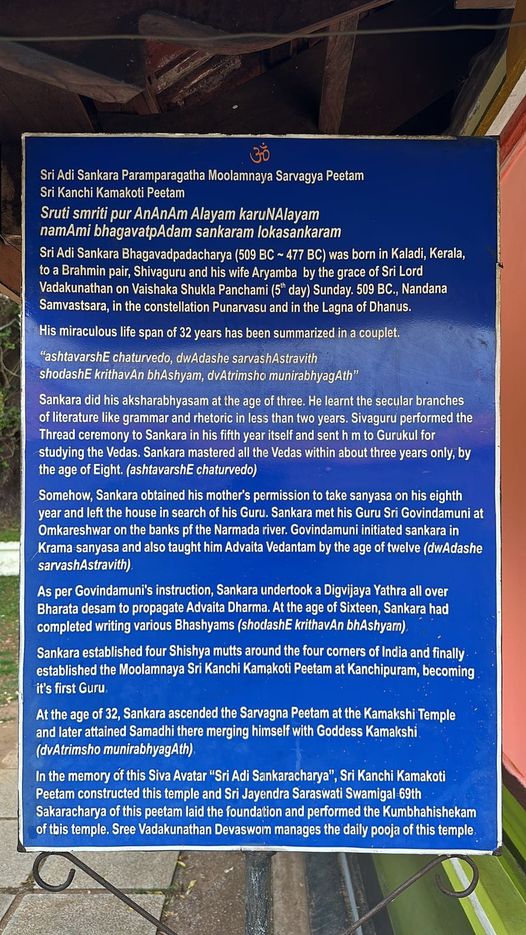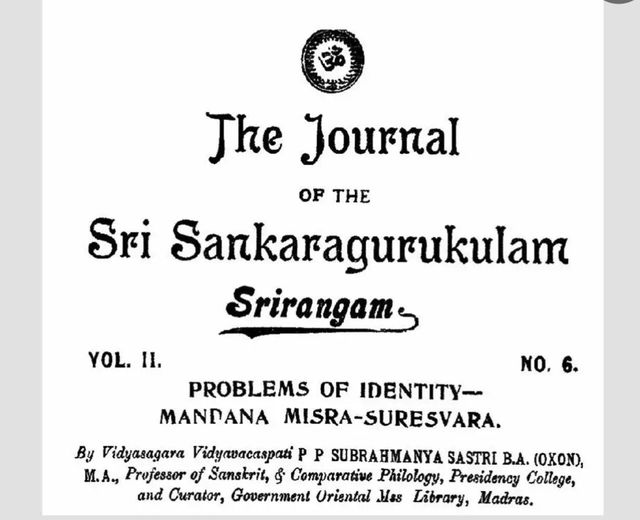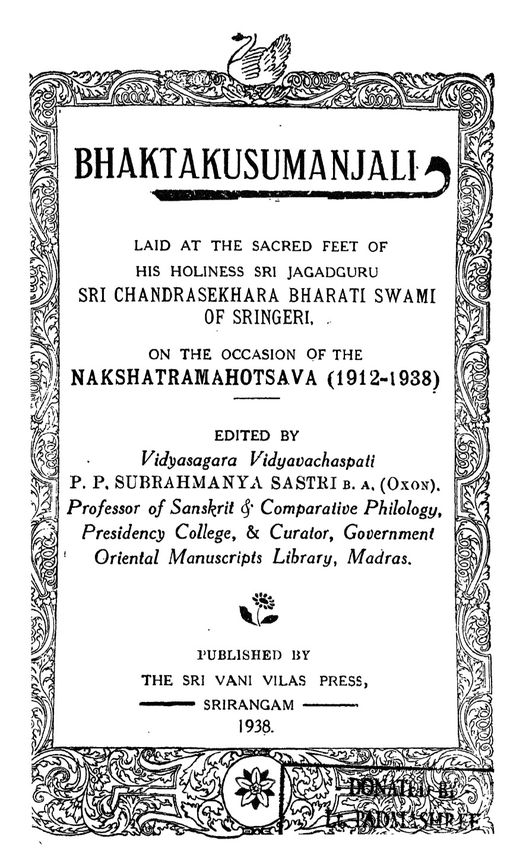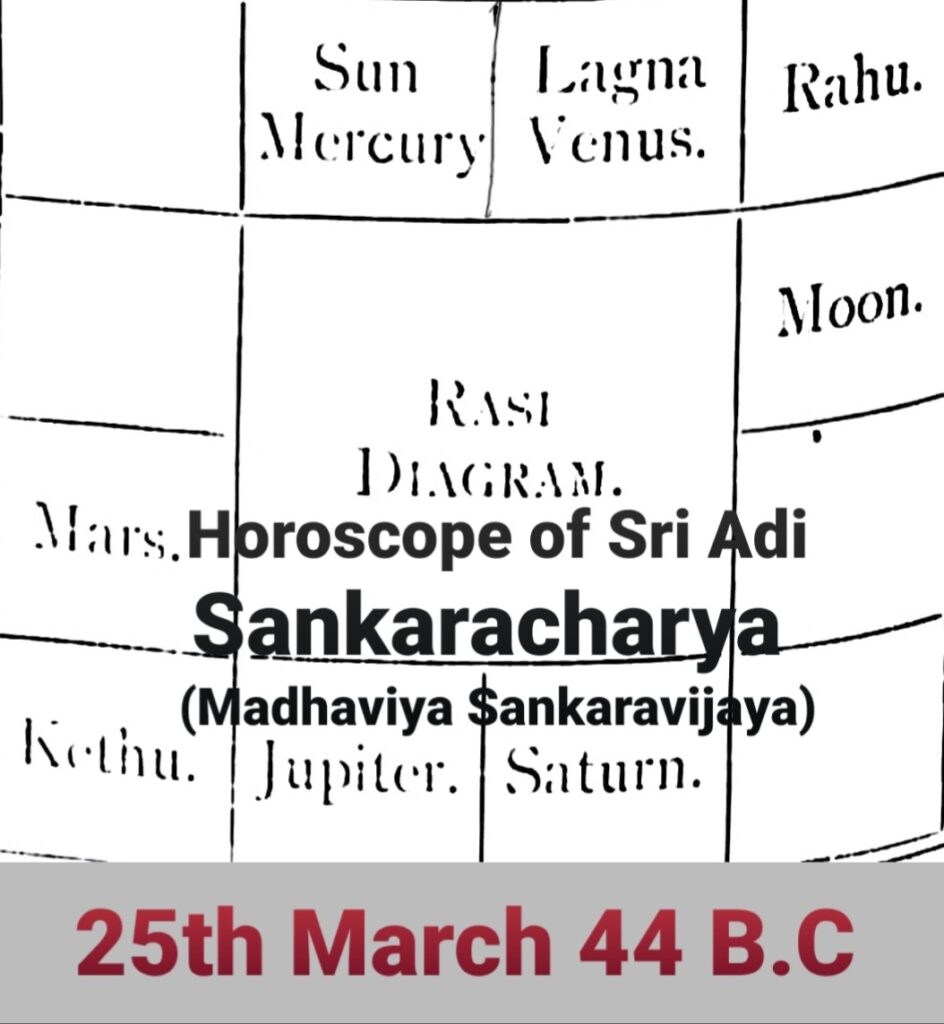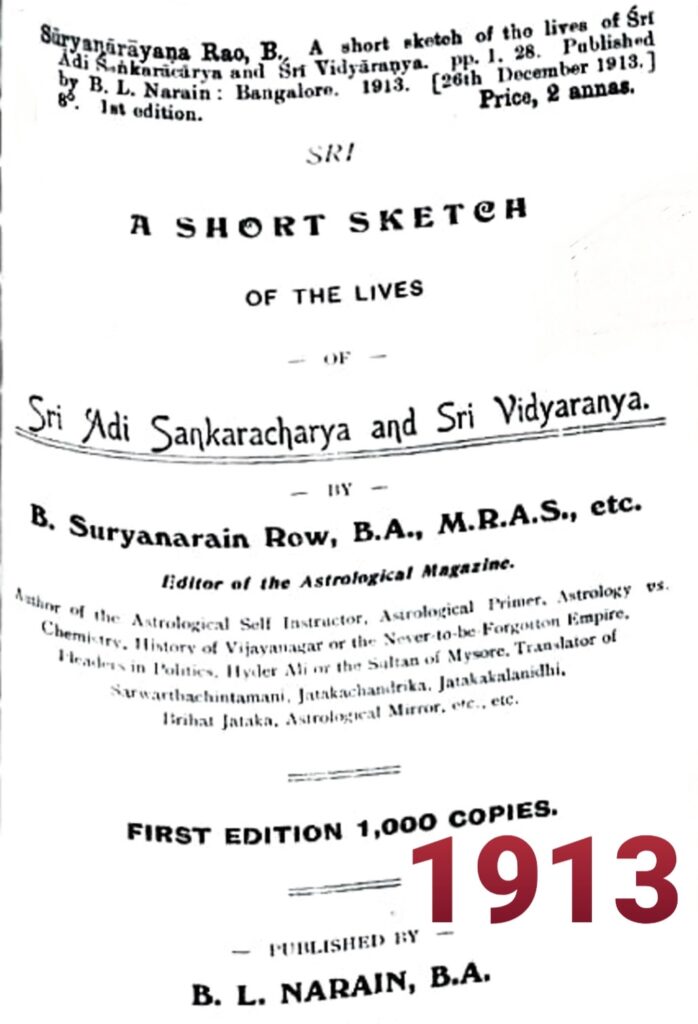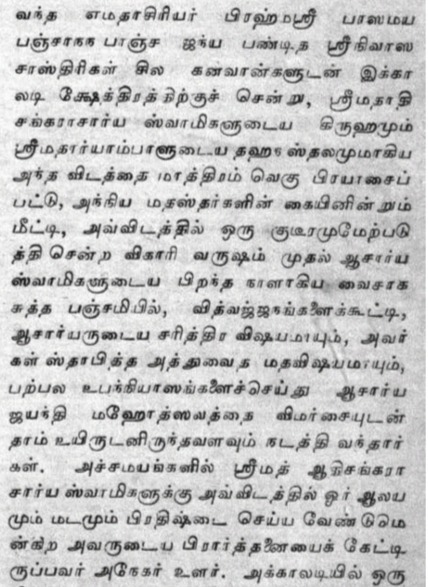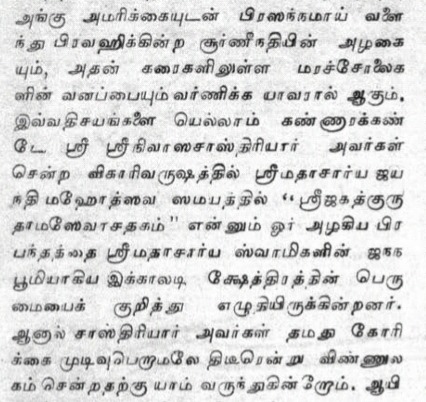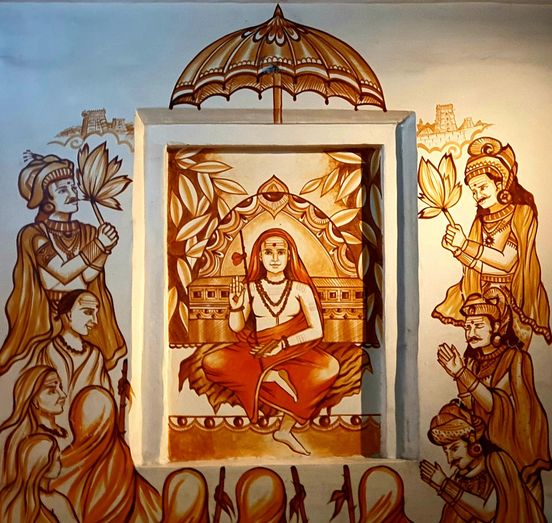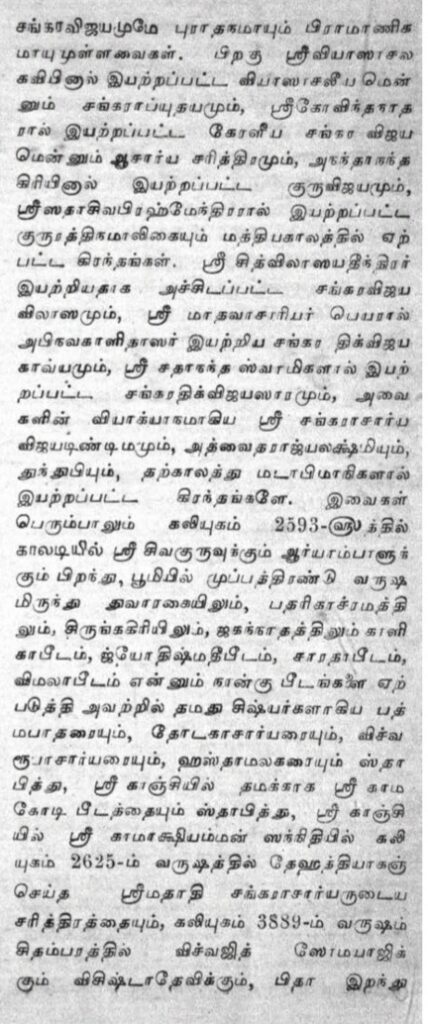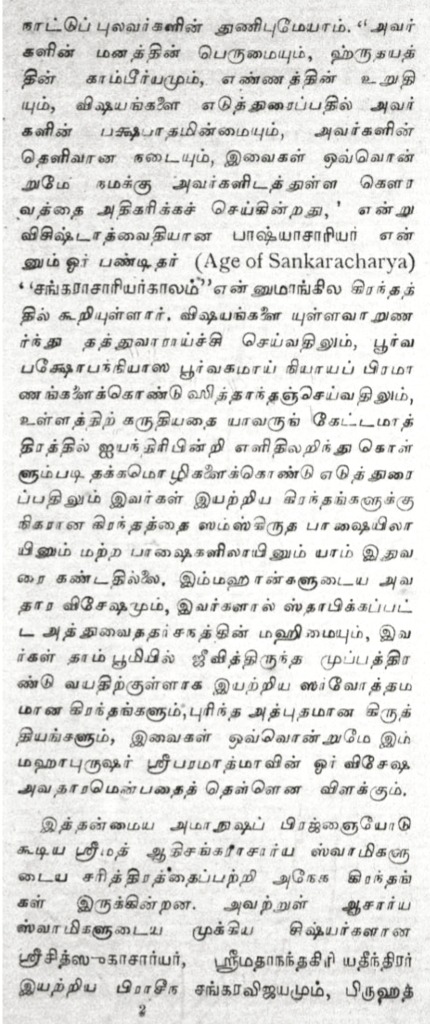Extract of the inscription (in english text) found near Sri Adi Shankara Bhagavatpada Shrine at Sri Vadakkunatha Swamy Temple in Trissur, Kerala.
“…Some how, Sankara obtained his mother’s permission to take sanyasa on his eighth year and left the house in search of his Guru. Sankara met his Guru Sri Govindamuni at Omkareshwar on the banks of the Narmada river. Govindamuni initiated sankara in Krama sanyasa and also taught him Advaita Vedantam by the age of twelve (dwAdashe sarvashAstravith)
As per Govinda muni’s instruction, Sankara undertook a Digvijaya Yathra all over Bharata desam to propagate Advaita Dharma.
At the age of Sixteen, Sankara had completed writing various Bhashyams (shodashE krithavAn bhAshyam)
Sankara established four Shishya mutts around the four corners of India and finally established the Moolamnaya Sri Kanchi Kamakoti Peetam at Kanchipuram, becoming it’s first Guru.
At the age of 32, Sankara ascended the Sarvagna Peetam at the Kamakshi Temple and later attained Samadhi there merging himself with Goddess Kamakshi (dvAtrimsho munirabhyagAth)
In the memory of this Siva Avatar “Sri Adi Sankaracharya”, Sri Kanchi Kamakoti Peetam constructed this temple and Sri Jayendra Saraswati Swamigal 69th Sakaracharya of this peetam laid the foundation and performed the Kumbhabhishekam of this temple. Sri Vadakunathan Devaswom manages the daily pooja of this temple.”
